2024 Tele Vue Product Anniversaries
Our old catch-phrase “Tops in the Field” speaks to the quality of our gear in the observing field. We celebrate the anniversaries years of our top-rated products by contrasting them with standouts in the world of track and field in those years.
1989: 35 Years Ago — Emerald Anniversary
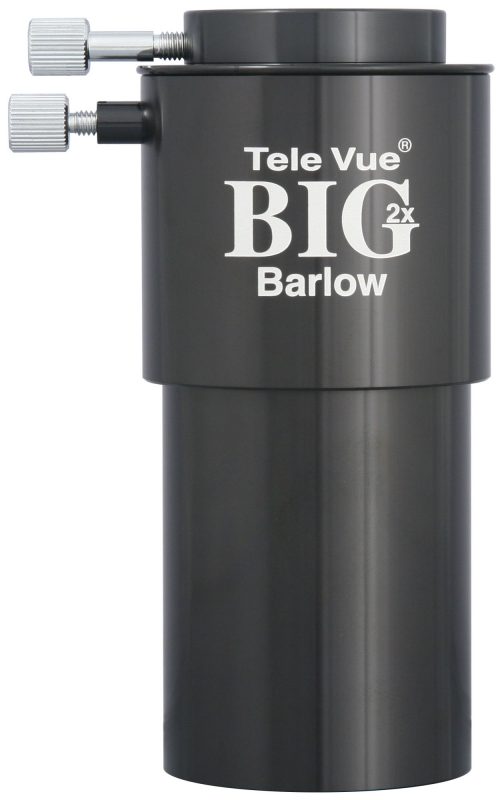
Prior to the Big Barlow introduction, Tele Vue Barlows were strictly for 1¼-inch eyepieces. The thought was Barlows were only needed to get to magnifications beyond what that the shortest focal length eyepieces provided…and all those were 1¼-inch eyepieces. It was a Tele Vue dealer that originally persuaded us to design a 2-inch Barlow, virtually guaranteeing us that it would be a hit. And, he was right! The introduction of our 2x BIG Barlow allowed doubling the power of wide-field, 2-inch eyepieces while maintaining the native eye-relief of the long focal length eyepiece. When the Big Barlow is fully seated, 2-inch and 1¼-inch eyepieces will be parfocal. For this reason, we recommend the Big Barlow mainly for Dob/Newtonian scopes and not for any telescope using a Star Diagonal. The current model has brass clamp rings, filter threads, and is fully multicoated. Now celebrating its Emerald Anniversary, it has stood the test of time.
Alan Dyer. Astronomy Magazine
1994: 30 Years Ago — Pearl Anniversary
Panoptic 27mm
The 68° Panoptic 27mm eyepiece is still a “Pearl” after 30-years. Introduced as an “in-between” focal length, its scaled design offers equal performance to the 35mm and 22mm Panoptics it sat between at its introduction. Like all Tele Vue eyepieces, the 27mm Panoptic features full multi-coatings, blackened lens edges, filter threads, and rubber grip rings.
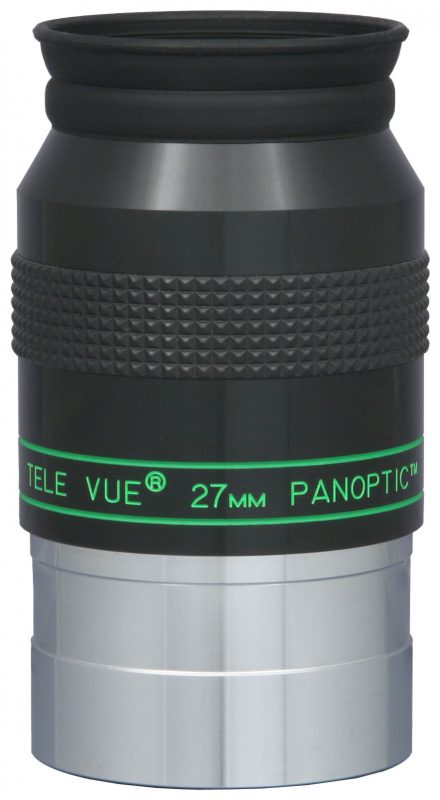
1999: 25 Years Ago — Silver Anniversary
1999 was a tech “gloom year” as society awaited the “Y2K Bug” to send computers crashing at the first tick of the new century. But, for Tele Vue, 1999 had a “silver lining” as all four products introduced that year are still in production today!
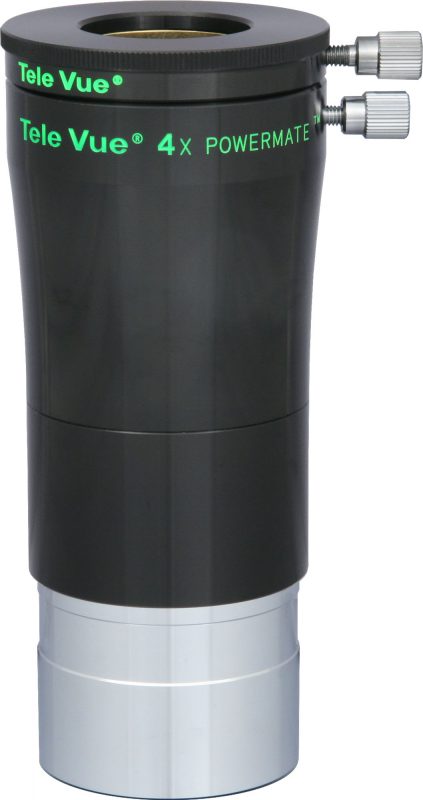
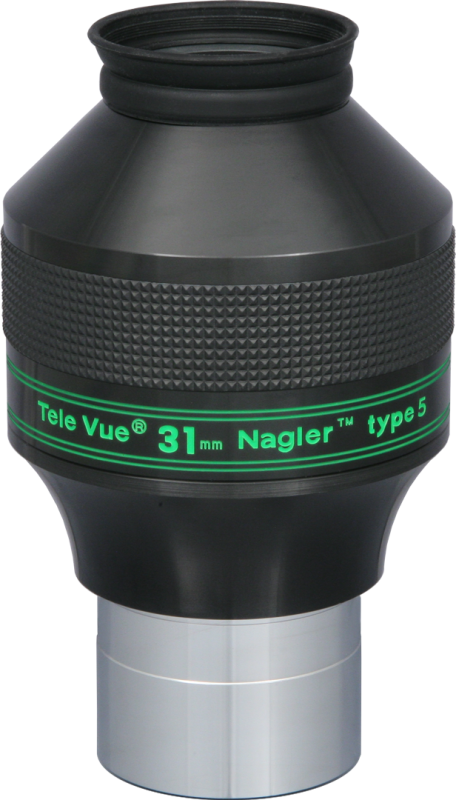
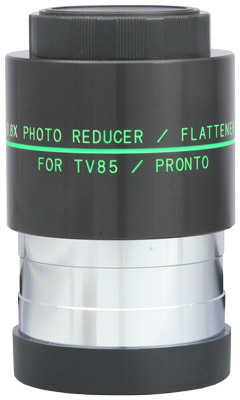
4x Powermate™ PMT-4201
Our first 2-inch barrel Powermate™ not only quadrupled the magnification, it did so without changing the exit pupil location of the eyepiece which results in vignetting of the field of view. The Powermate™ consists of a negative doublet plus a positive “pupil-correcting” doublet. This 4-element system provides the magnifying function of a Barlow without its limitations by restoring the field rays back towards their original direction, as if the Powermate™ were not there. The result is a pure magnification increase. The current model can also use an optional T-Ring adapter for attaching to DSLR cameras or dedicated astronomy cameras that use M42 thread.
Nagler 31mm Type-5
Twenty-five years young, the Nagler 31mm Type-5 became an instant legend when it was “born” in 1999. Our longest focal length 82° Apparent Field Nagler eyepiece has 19mm of eye relief, wide grip ring, and a unique 6-element design using some pretty exotic glass types. It’s the “go-to” eyepiece for owners of Paracorr corrected Dobsonians as fast as f/4. Why? It provides almost the largest true field possible for a 2-inch eyepiece with an exit pupil size that minimizes visibility of the secondary shadow. Take an example of a 12.5-inch f/4.5 Newtonian, with a 55mm Plössl the combination produces a 1.8° field at 35x with a large, 9.1mm exit pupil. A pupil that large will likely introduce a visible secondary shadow in the middle of the field of view. The same scope with a 31mm Nagler will produce a 1.7° field at 46x with 6.9mm exit pupil — almost the same field, at higher power, and much preferred exit pupil size.
T. Dickenson, A. Dyer. “Eyepieces/Nagler-Class Eyepieces”. The Backyard Astronomer’s Guide (3rd edition). p.74.
0.8x Reducer/Flattener TRF-2008
This must-have accessory for imaging through Tele Vue-85, -76, or Pronto telescopes does wonders flattening the field while increasing photographic speed. This fully multi-coated 3-element unit with 48mm filter thread inserts directly into 2-inch focusers and accepts standard T-Rings for 35mm cameras or M42 for astro-cameras. See Brian Paczkowski’s use of the TRF-2008 with Tele Vue-76 and QSI 683 CCD camera in our Tele Vue-76: Imaging New Mexico Skies! blog.
[T]he 0.8x Reducer/Flattener performs superbly. Star images are perfectly round to the very corners of the field, and there is minimal vignetting. A high-magnification examination of the images reveals little, if any, secondary color even at the edge of the field.
Cook, C. “Test Report: Less Magnification for Photography”. Sky & Telescope (July 1999)

90º Everbrite Diagonals
For those that simply want the best match for their astronomical eyepieces, our dielectric Everbrite diagonals will give you the brightest and most natural image possible. The advantage of the dielectric coating over enhanced aluminum is it’s 99% reflective across the visual spectrum, providing the brightest, whitest image possible, avoiding the color aberration introduced by prisms. Though common now in the amateur market, twenty-five years ago the dielectric coating was pretty exotic stuff. Optical quality is ensured as every mirror is star-tested in a special fixture which places the mirror in a higher power-space than a diagonal mirror is ever used. The CNC machined, one piece, aluminum-body construction guarantees that the centerline of the nose and eyepiece barrels are exactly 90° and coincident to each other and that the flat for the mirror is machined exactly 45° to both. Besides such an accuracy advantage over typical diagonal construction, heavy accessories can’t force the diagonal body to “unscrew” from the barrel. All models feature brass clamp rings, anti-reflection threads, and 1¼-inch and 48mm filter threads respectively.
The Schmidt-Cassegrain Rich Field Kit (SCP-8202) includes a 2-inch Everbrite diagonal with an adapter tube to allow attachment to the common 2-inch-24 TPI thread of modern SCTs (use reducing thread if that accessory is included with your large SCT).
2004: 20 Years Ago — Emerald Anniversary
X-Y Adjustable Mount AAM-0001 and SCT Version AAC-0002
The X-Y Adjustable mount is used for mounting the Tele Vue-60 telescope onto a Tele Vue ring-mount or Schmidt-Cassegrain scopes 8″ or larger. This allows for using the Tele Vue-60 as a “superfinder”.
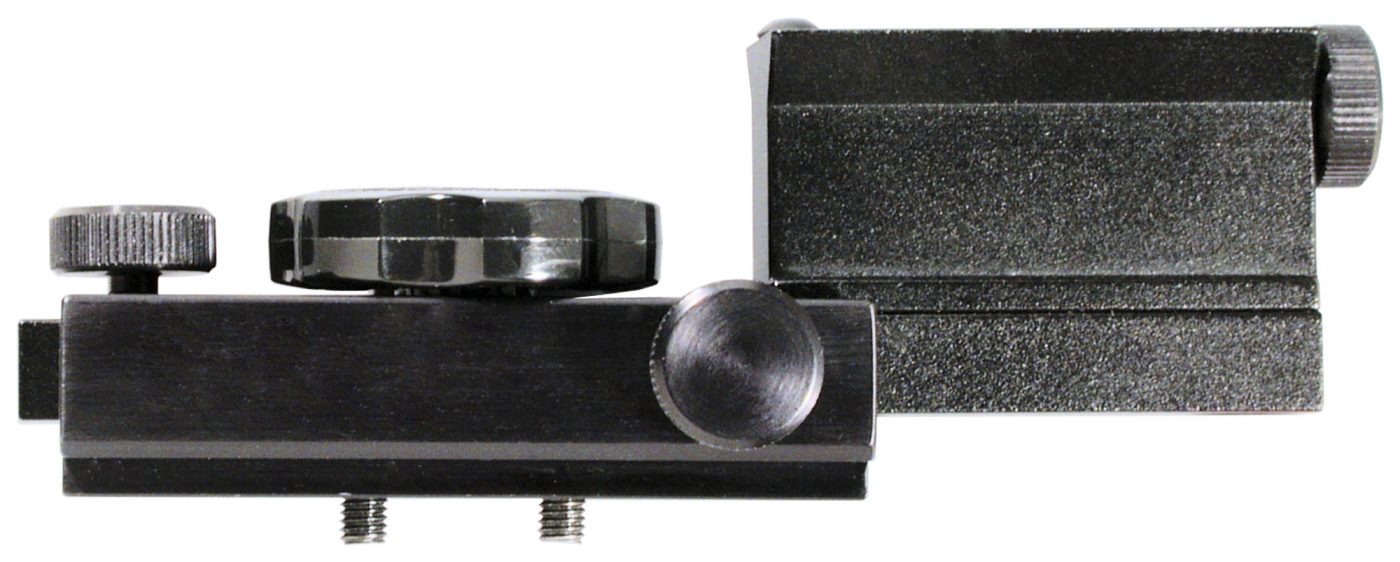
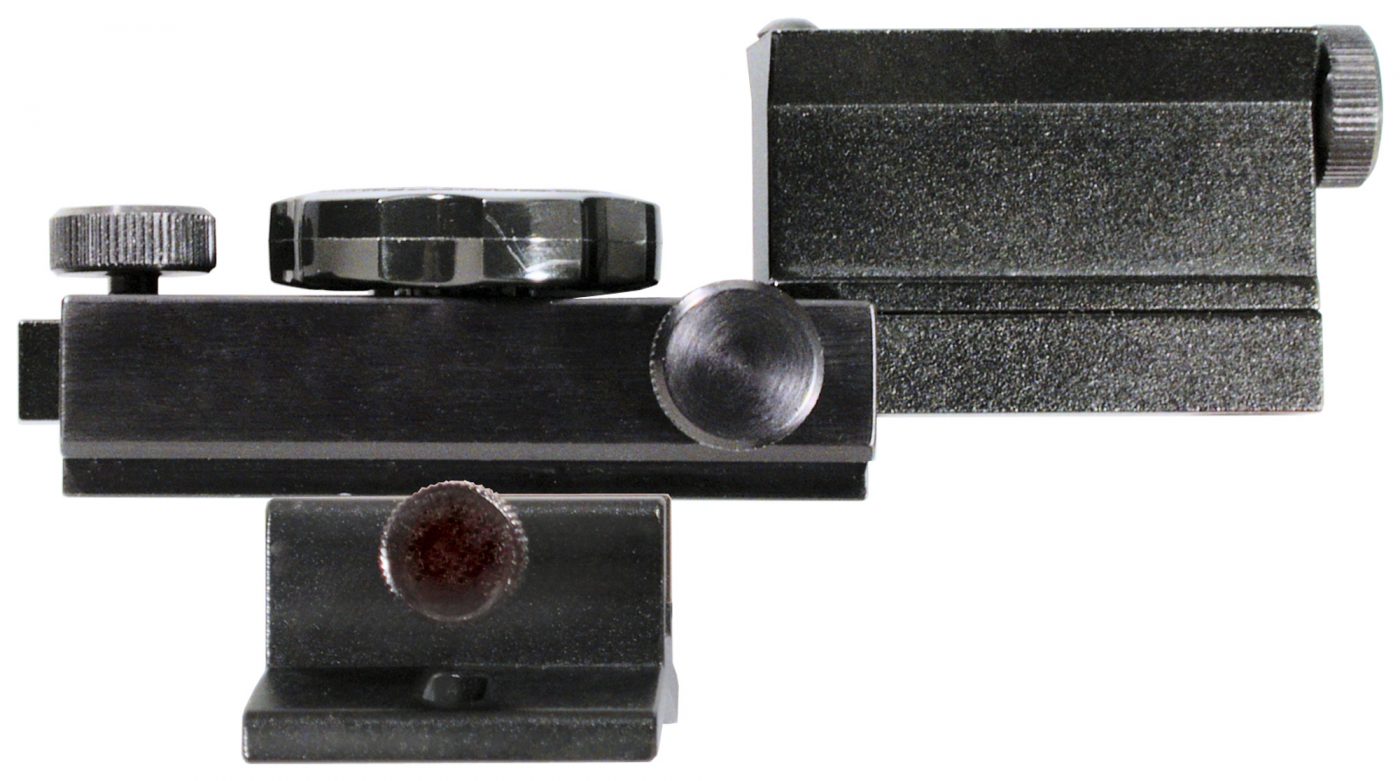
Quick Release Universal Finder Mount QFM-1008
This finder mount attaches to the accessory slots found on all Tele Vue mount ring options to allow the use of 50-mm finder scopes. The dual-ring mount has six screws to allow finder scope alignment to your main scope and a built-in Dovetail (QRD-1006) that slots into the Quick Release Bracket (QRB-1002) that is mounted onto the accessory slot. The QRD-1006 and QRB-1002 combo are also standard equipment on Starbeam (SRT-2010) and can be used to convert other accessories like Sol Searcher and Qwik Point Finder into quick release versions.
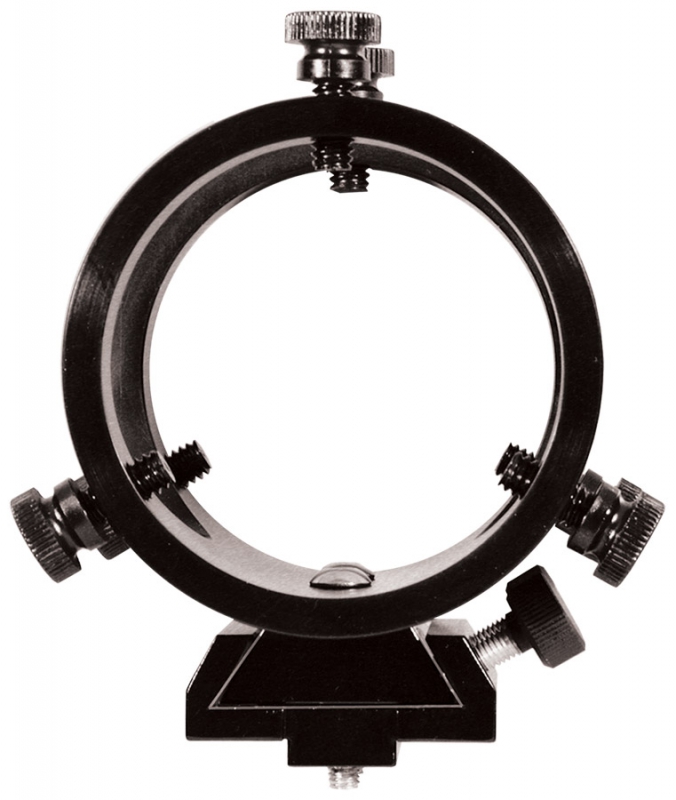
Finder Mount QFM-1008
2009: 15 Years Ago — Ruby Anniversary
The 10-mm and 21-mm were the last of the ground breaking 100° Ethos line released. These are two noteworthy focal lengths as the 10-mm filled a gap in the series and the 21-mm was as far as we could extend the focal length and true field of view and still stay true to David’s original Ethos performance goals. Both models share all the performance attributes and features of the other Ethos models. The 10-mm is a dual 1¼-inch/2-inch barrel design, while the 21-mm is 2-inch only.
Ethos 10mm
Our “Some Holes Just Need to be Filled!” ad campaign for the 10mm showed a giant version of the eyepiece on the floor of White Rim Canyon in Utah with the other Ethos eyepieces arrayed on either side of the canyon walls. We were making the point that this new eyepiece filled the large gap between the 8mm and 13mm Ethos.
“Industry News / NEAF 2009”. Astronomy Technology Today (May/June 2009). p14
Ethos 21mm
At the 2009 Stellafane Convention, a prototype Ethos 21mm was auctioned off as a fundraiser to support the following year’s convention and to make capital improvements to the convention site. The winner received the eyepiece months before it was available to the general public.
Hodgson, Matthew. “Televue Ethos 21mm Review”. Alpha Lyrae (26 Feb. 2014)
2014: 10 Years Ago — Diamond Anniversary
We introduced special variants of our Tele Vue-NP127is and Paracorr Type-2.
Tele Vue-NP127fli Astrograph
The idea for the NP127fli was born out of the frustration imagers have trying to piece together equipment. We worked with Finger Lakes Instrumentation (FLI) to make a truly bolt-together, “plug-n-play” imaging train. This quintuplet refractor has the same Nagler-Petzval optics as the Tele Vue-NP127is with the addition of a permanent Large Field Corrector properly spaced to accommodate the back focus of the FLI Atlas focuser, CenterLine filter wheel, and ProLine camera series. There is no problem with drawtube flexure as there is no drawtube! The scope is one solid, threaded together piece and the focus is handled by the robust Atlas focuser. The camera equipment connects to the back of the scope using the patented FLI Zero-Tilt design. Tele Vue’s unique image plane tilt correction was incorporated into the new rear section of the NP127fli to allow for the last possible tweak to the system. It is a pure, wide-field, fast focal ratio astrograph (127mm objective, f/5.3, covering up to a 52mm diagonal sensors) capable of producing a 4.4° diagonal field of view.. Gordon Haynes has an exquisite gallery of NP127fli images on AstroBin.
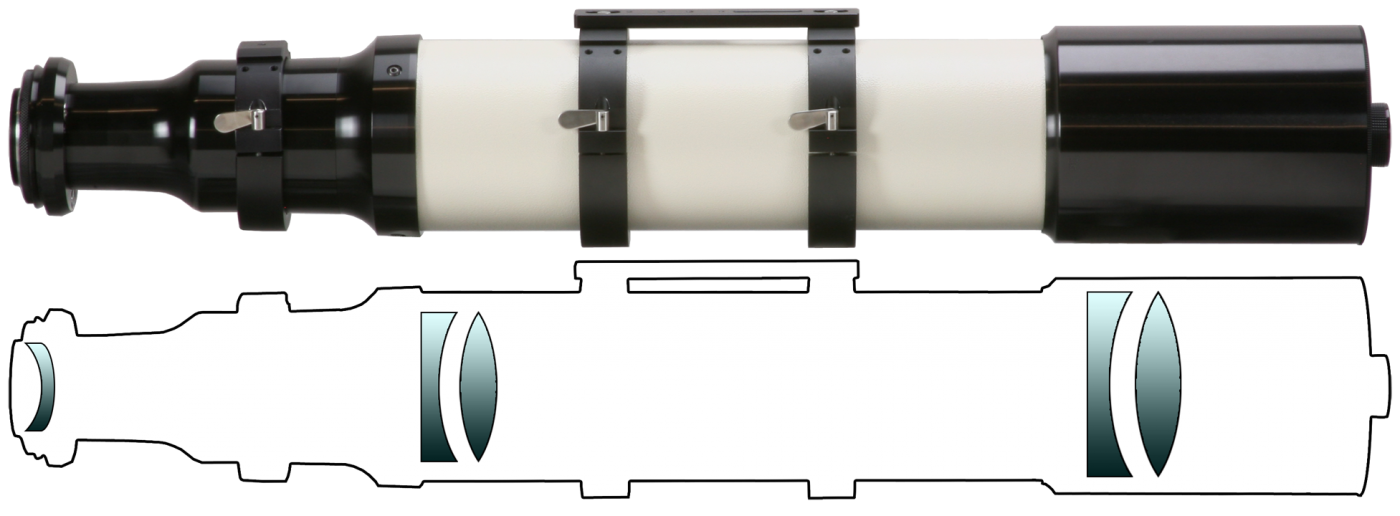
Wolfgang Promper
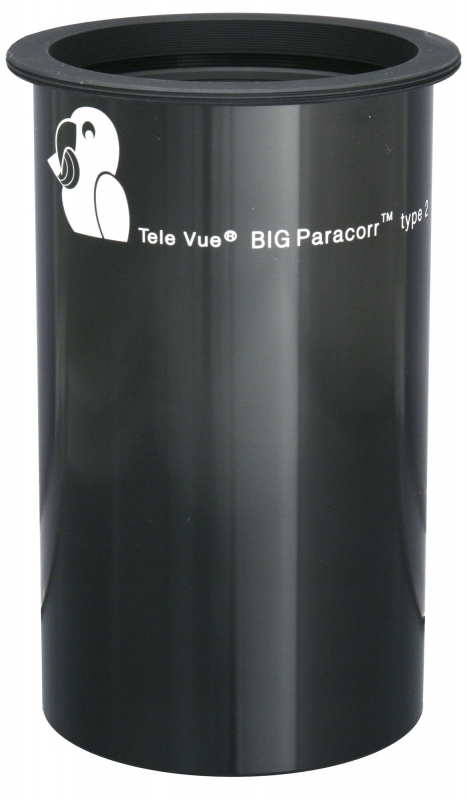
BIG Paracorr VIP-3010
Following the lead of the Big Barlow, we decided to name the larger 3-inch coma corrector the BIG Paracorr Type-2. The need for a larger diameter Paracorr arose from the proliferation of ever faster Newtonians being used for imaging. It is really only necessary for imaging through fast Newtonians with up to 52mm diagonal sensors. Visually, the 2″ Paracorr can handle the maximum field that can be used with fast Newtonians without noticeable vignetting. At f/3, the Big Paracorr shrinks star images at the edge of the field of view to 25 times smaller than without any correction – making it an essential accessory for wide-field imaging through fast Newtonians with big chips. Back focal length has been extended to 80mm over the 2″ Paracorr to allow for additional accessories to be placed in the optical path. The optical assembly is topped with a “stop” flange having 3.40″-24 pitch threads to mount camera adapters and spacer tubes. Ask your scope builder to include one in your next build.

Did you observe, sketch, or image with Tele Vue gear? We’ll like your social media post on that if you tag it #televue and the gear used. Example:
#televue #tv85 #ethos #jupiter
Do you want your Tele Vue images re-posted on Tele Vue Optics’ Social Media accounts? Use this hashtag for consideration:
#RPTVO
More Info
- Why Choose Tele Vue Eyepieces (mobile version)
- Why Choose Tele Vue Telescopes (mobile site) and warranty info






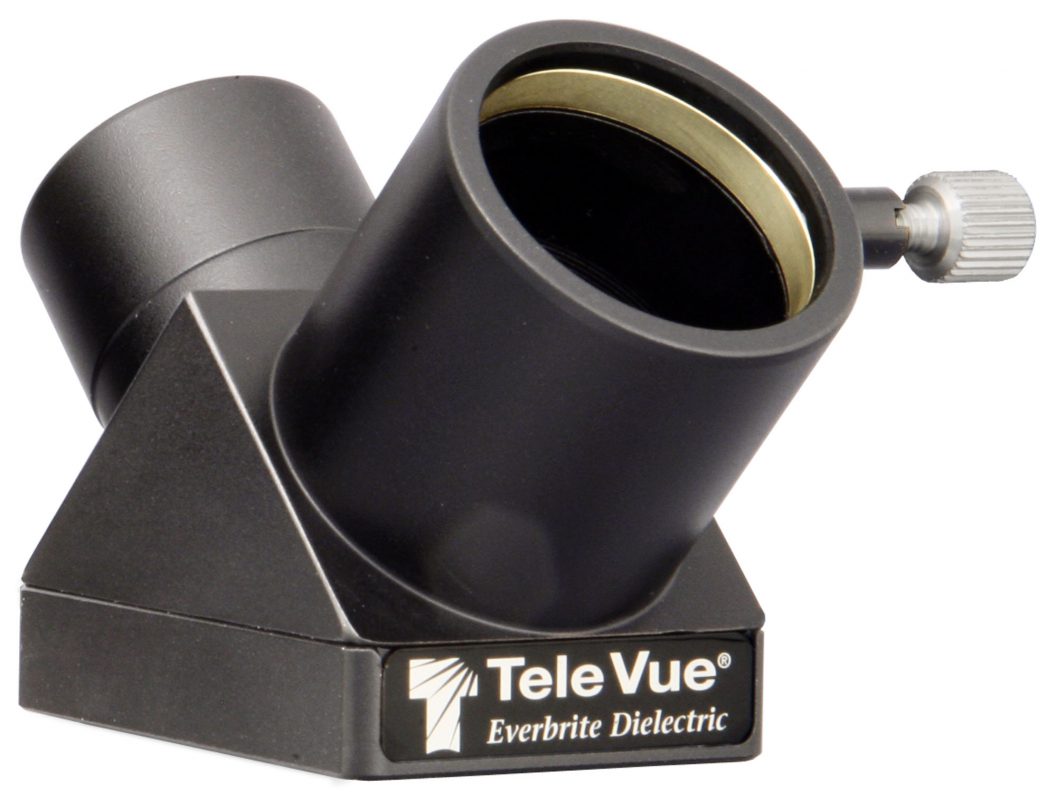

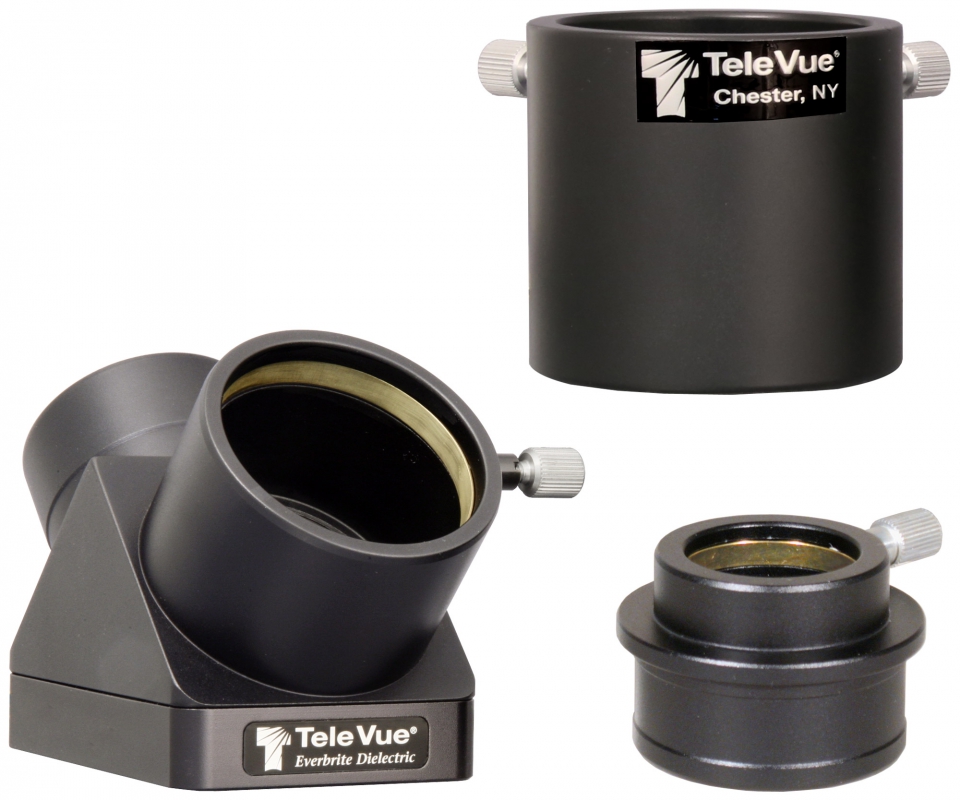
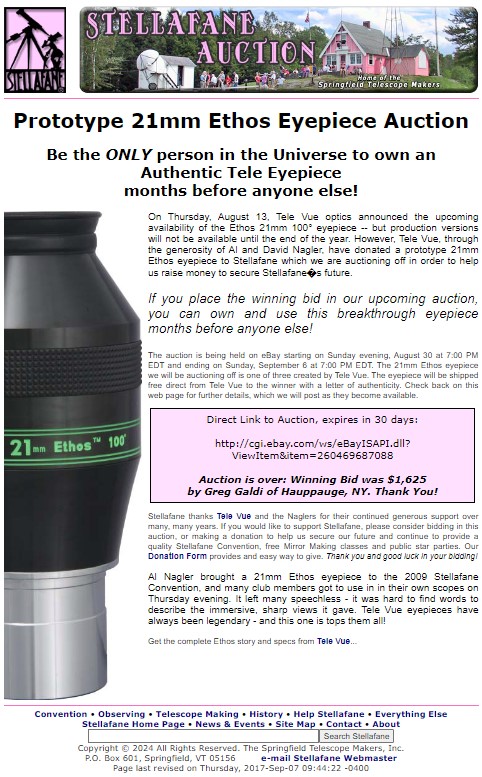
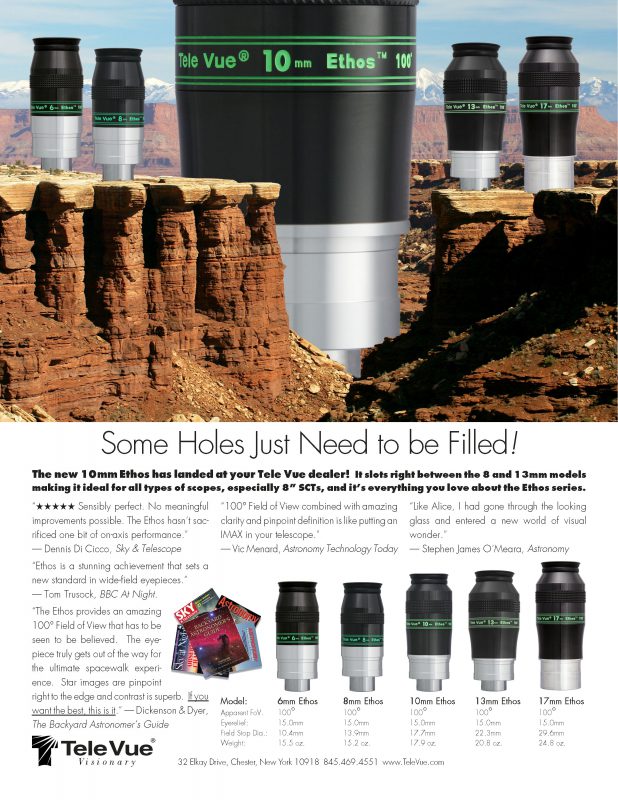
Fantastic blog and products!
Thank You ?
Curious, what is [] complete setup in last picture?
TV: Jay Butler’s imaging system consists of a 10″ f/4.1 Astro Systeme Austria ASA10N Newtonian astrograph with Tele Vue 3″ BIG Paracorr coma corrector. Imaging is done with an SBIG FW8G-STXL filter wheel with Baader filters. The camera is the SBIG STXL-16200M.